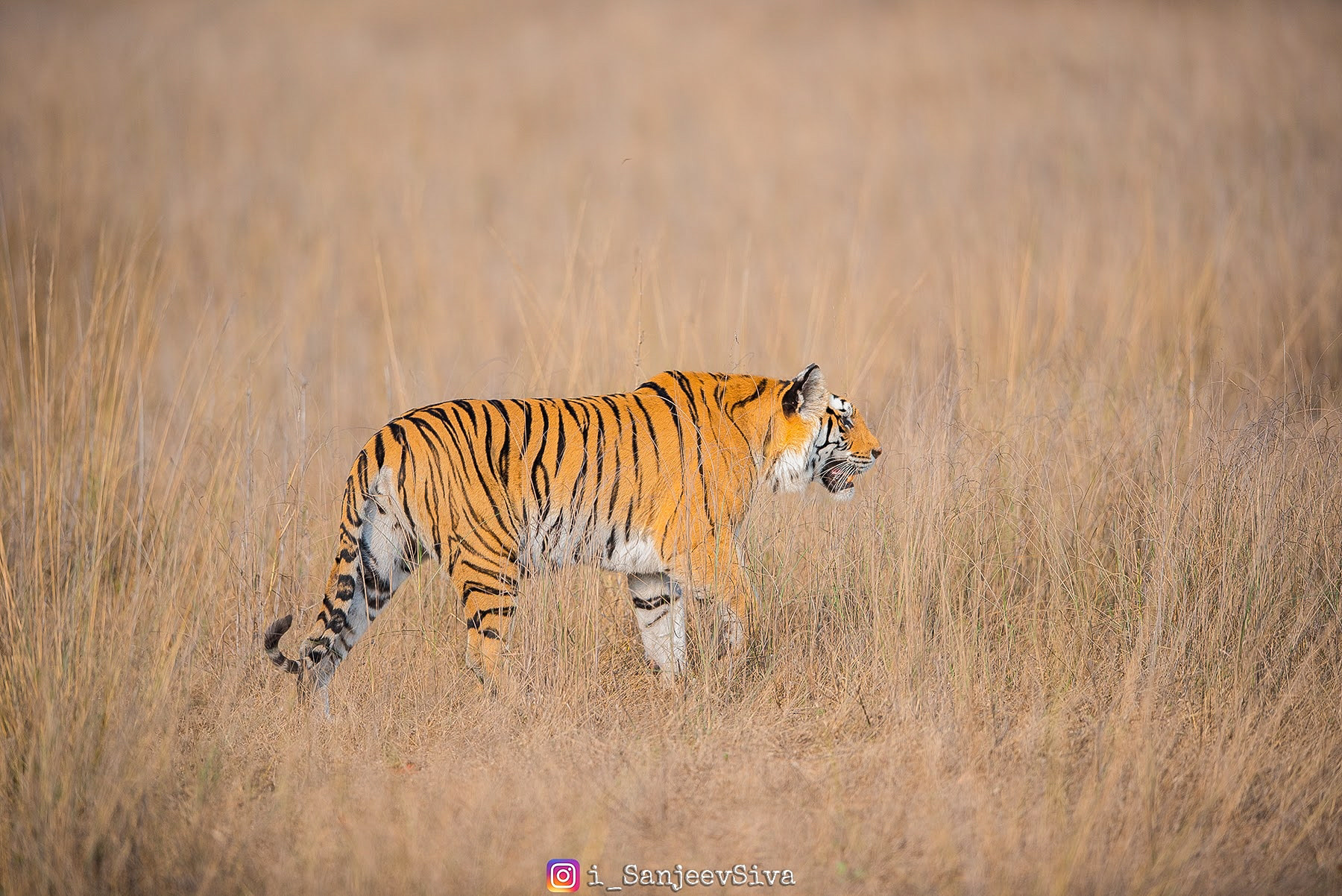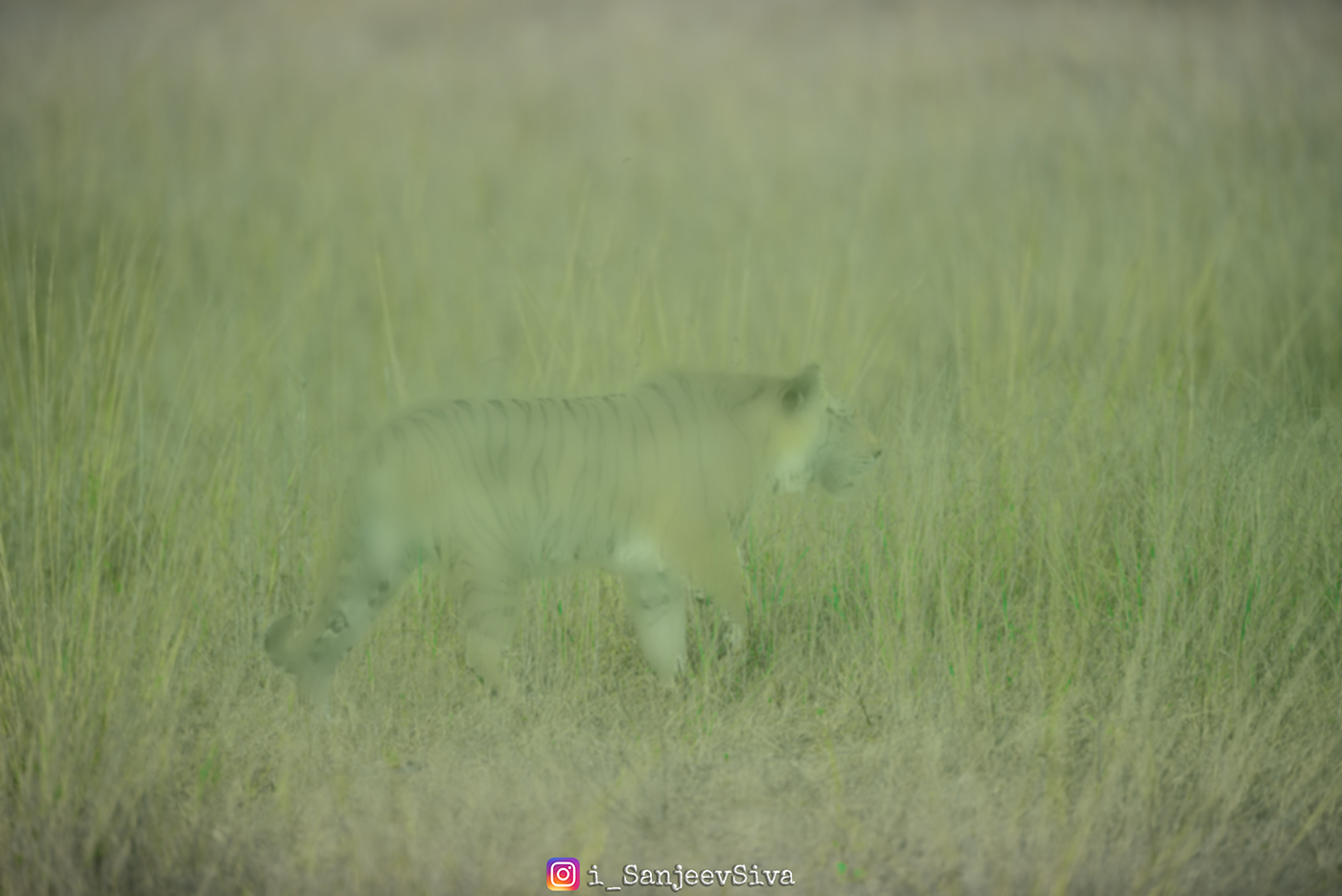𝗔𝗿𝘁 𝗼𝗳 𝗖𝗮𝗺𝗼𝘂𝗳𝗹𝗮𝗴𝗲
Deer cannot differentiate a crouched tiger from a rock, when the tiger is totally motionless (during stalking). This is called crypsis. Even the slightest twitch of the ear or the tail of the tiger or the swoosh of the wind along the tiger’s body or the smell of a tiger can alert the deer; what the deer lacks in visual acuity, it makes up for it in smell and hearing.
Like most felines, Tigers and Leopards are solitary hunters and need to get as close to the prey as possible before launching an attack, else the prey would outrun the cats. So, they employ a type of camouflage known as ‘disruptive colouration’.

The vision of a deer is theorized to be 20/60 to 20/100 which means if the visual acuity of humans is 60 feet, the deer can see only from 20 feet. Poor visual acuity of deer is because the deer’s retina has 20 times more rods (enabling low light vision) than cones which helps it to see better in night than that in humans by as much as 18 times. The processing of surroundings is also faster, at around 3 or 4 times in low light, than in humans.
Deer also lack the UV filters and hence are more sensitive to UV and blue light (the filters also provide long-term safety from the dangerous UV light and help in sharpened vision in humans). The Orangish-yellow fur of the Tiger coupled with the stripes camouflage with the surroundings. The whitish under-portions of the Tiger break the shape or outline of the tiger when it moves; counteracting the shade to flatten out the light, thus not allowing the deer to pursue the 3-dimensional shape (3-dimension is perceived by the eye due to shading). This is called countershading or Thayer’s law.
Skin patterns also help in disruptive camouflaging of predators when pursuing a prey. It has been hypothesized that the skin patterns on a solitary hunter like a felid are largely a function of the pattern elements in the surrounding vegetation and the activity at different times of the day. Cats in complex arboreal environments such as tropical forests have complex patterns (like a clouded leopard) and those adapted to terrestrial environments have relatively simpler patterns.
The ASIP gene or the Agouti-Signaling Protein Gene is responsible for the distribution of melanin in mammals. ASIP interacts with MC1R (Melano-Cortin 1 Receptor) to signal the melanin-cells (melanocytes) to produce phaeomelanin (yellow-red pigment) or eumelanin (black pigment), but the mechanism of this signaling to produce stripes or spots and at what frequency remains unclear. Let us just say that the evolution favoured stripes in tigers better than any other patterns.
For its size, the tiger is an exceptional ambush predator and the king stalker; barring a fully grown elephant or a rhino, there is hardly any animal that the tiger doesn’t hunt; but a chase will negatively affect a tiger’s DEE (Daily Energy Expenditure) and hence it employs disruptive colouration, crypsis, seasonal variation (of fur colour), countershading, irregular outlining and other camouflaging techniques to reduce the visual cues for its prey; a successful hunt would need a tiger to reduce olfactory and auditory cues as well.
For a deer with a 20/100 vision, a tiger would appear like a large blob, while the stripes would break the pattern, making a tiger almost invisible from a long-off distance, specifically when walking in the tall grass.

